Available connectors
All available connectors in this TV are located at its rear side:
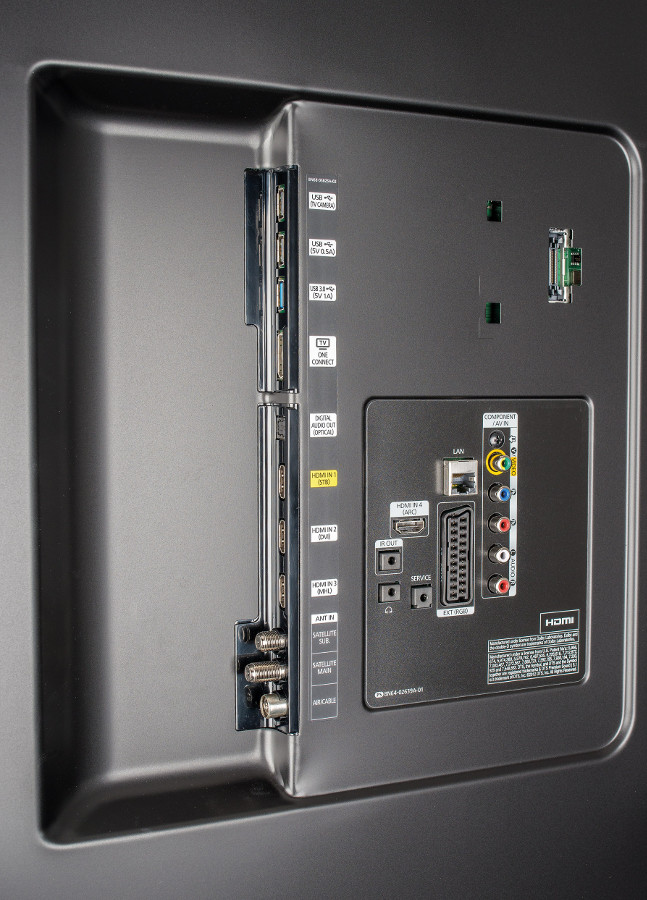
Namely they are:
- Two USB 2.0 ports
- One USB 3.0 port
- A socket for One Connect Box
- Optical audio output
- Four HDMI inputs
- Satellite dish connectors
- Coaxial aerial input
- IR blaster output
- Headphone output (pretty much unusable due to its location)
- Some service connector
- Ethernet RJ-45 (alas, 100 Mbps)
- One SCART input
- Combined composite-component input
- CI/CI+ adapter slot
- AC power connector (not on this photo, it’s on the right half of the panel)
Not that it’s a lot, but nowadays HDMI is most common, and there are four of them here.
If you happen to have four hundred euros you don’t need, you can spend it on the above-mentioned One Connect Box. In this case all the devices can be connected via the box, which in turn connected to the TV with a single cable (more on this in the next part, Accesories).
Of all these AV inputs I only used HDMI. This device doesn’t support the new HDMI with Ethernet standard, so you’ll have to hook it up to Ethernet (100 Mbps) with a separate cable. On the good side, it does have support for Anynet+ (also known as HDMI-CEC), which is a protocol allowing controlling other devices via HDMI.
The TV has two analogue and two digital tuners (!), but I couldn’t make use of any of these. Analogue terrestrial television is long time gone here in Holland, although some providers are still delivering it through the cable. There is digital terrestrial television (DVB-T), but it’s only three state channels and a few regional ones. They are all available in my cable subscription in a better quality (full HD).
There is also a satellite decoder, and the TV even supports dish positioning systems DiSEqC 1.2 and USALS.
Remote controls
This TV is shipped with a pair of remotes, a conventional one and an innovative Smart Touch Control, which looks very much like a soap bar.
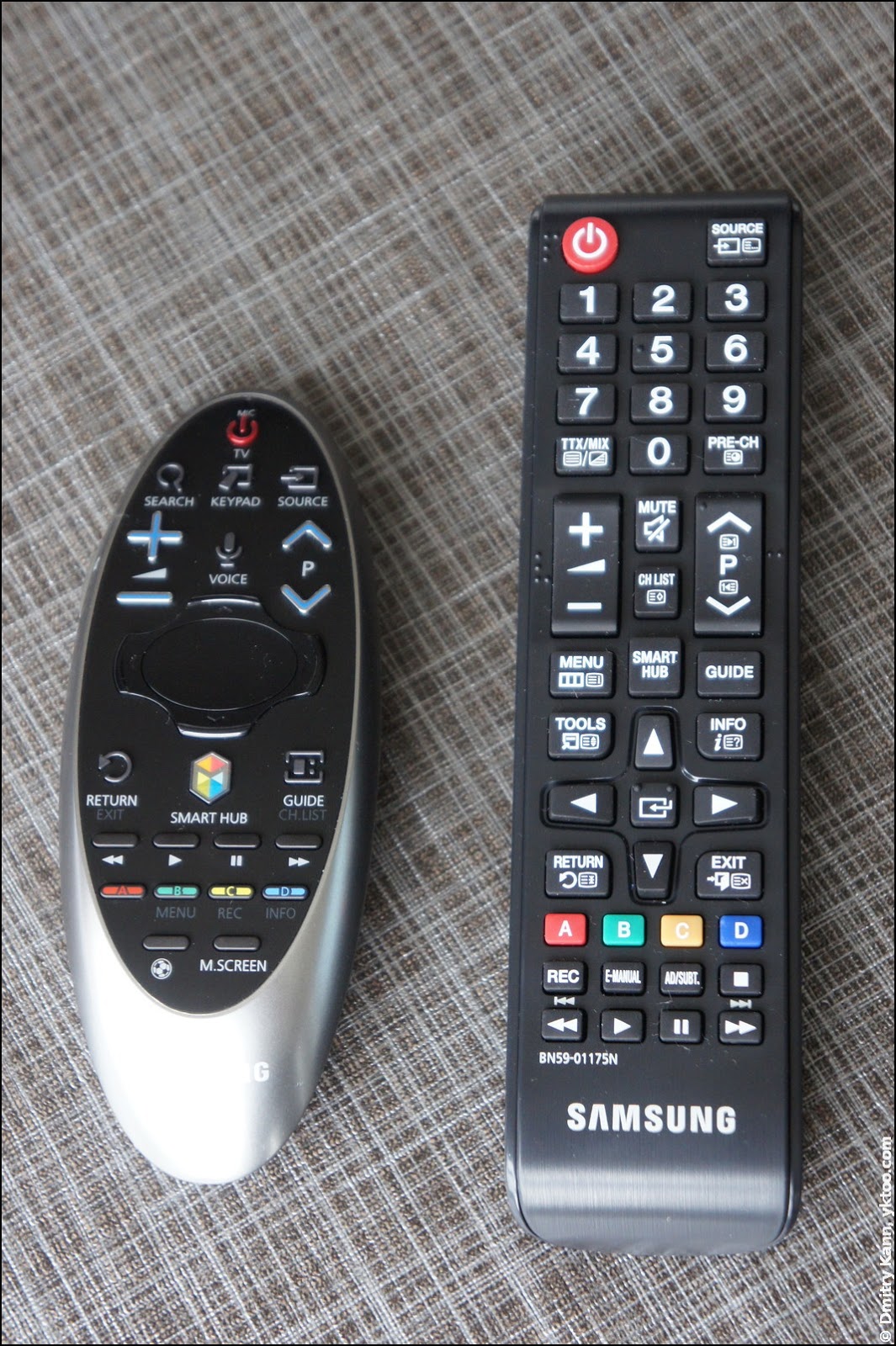
The conventional remote needs no additional explanation, it uses regular infrared (IR) transmission to send commands to the TV.
The “soap bar” is a more peculiar piece of technology. It only uses IR to send on/off commands, and all the rest is transmitted via Bluetooth. The connection goes into standby after a minute of inactivity, which in turn causes some reconnection delay when you hit a button, a second or two.
Apart from the minimal set of buttons, it features a big touchpad button in the middle. By putting you finger on it you turn the remote into a mouse, when a light spot that appears on the screen serves as a cursor:
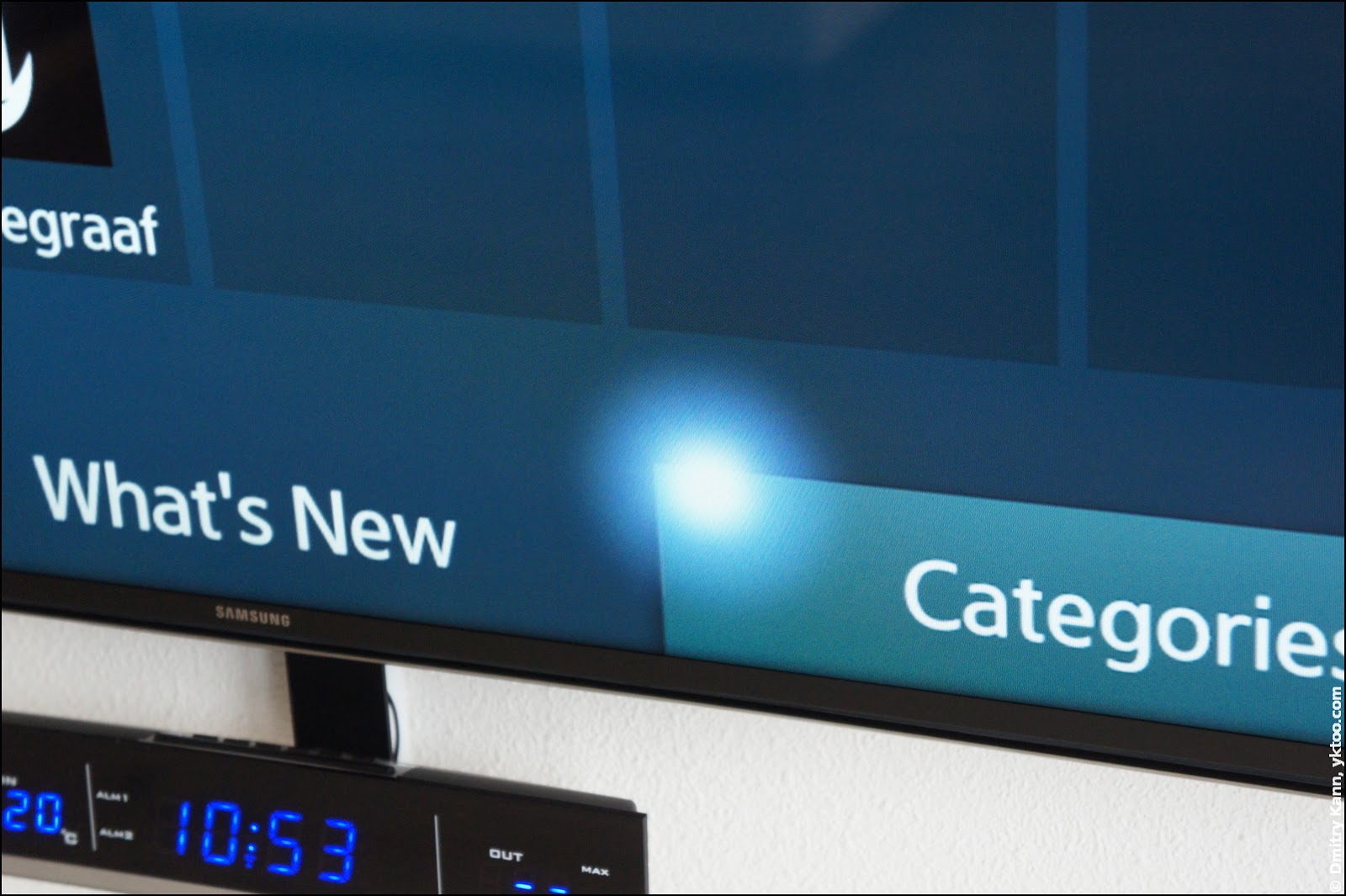
You move the spot by tilting the remote, which has gyroscopes to track its orientation. To “click” the mouse you just press the button. And if you lift your finger off the button, the spot disappears. This is quite a handy feature, and well implemented.
It’s especially handy for typing on the on-screen keyboard:
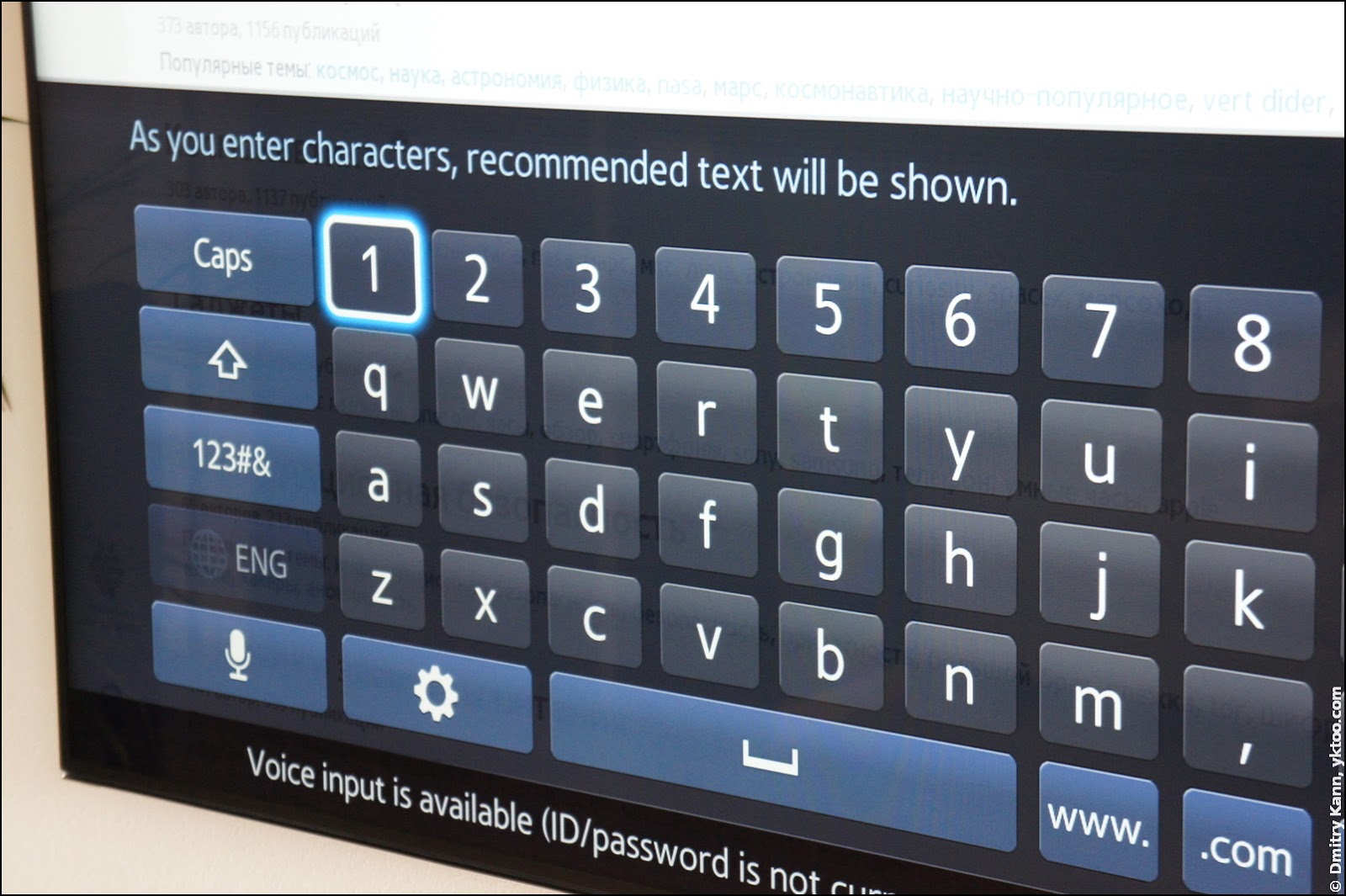
As mentioned above, the button is also a touchpad that allows horizontal and vertical scrolling, for example, in the web browser. But I found this function quite difficult to use, since the touchpad was always either over- or irresponsive.
More to follow. The Voice button lowers the TV volume and enters voice control mode. The remote has a microphone near its tip, where you say the commands. The voice system supports dozens of commands, from controlling volume to ordering films, but the implementation was quite disappointing. Maybe it’s me, but the TV refused to recognise most of my commands, often misinterpreting them in an inexplicable way.
Controlling the TV without a remote
In addition to the two remote controls, you can connect a regular keyboard and/or mouse over either USB or Bluetooth. In the case of a keyboard, its functional buttons are used for TV-specific commands (for instance, F6 = Source, F7 = channel list, F8 = Mute etc.).
And one more thing to mention is Motion Control, which allows controlling the device using gestures and requires a camera. With the Motion Control on you can move a screen cursor with your index finger and “click” by bending the finger. As soon as the TV notices it’s being pointed at, it displays big screen buttons and a finger cursor:
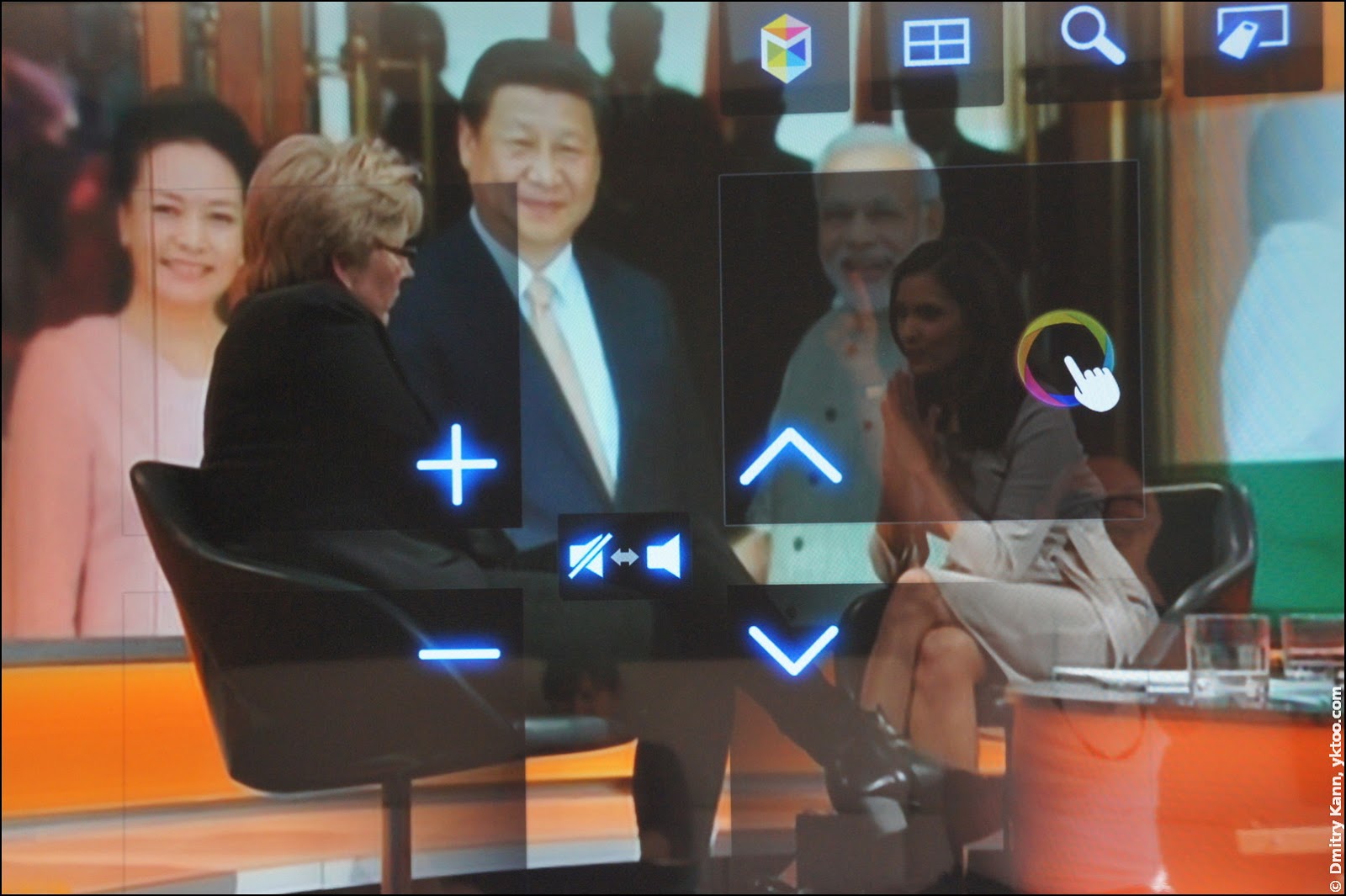
For this to work you have to be 1.5 to 5 m away from the screen, and well visible. So it won’t work in the darkness, for example. Also the convenience of this way of controlling the TV is questionable in my opinion. It’s just way faster to grab a remote and push a button.
IR extender
The infrared blaster mentioned before can transmit commands to various devices, which makes it possible to control them with your TV’s remote in most cases. Once set up, the TV will switch your set-top box (STB) on and off automatically. It can also change channels, invoke STB’s menu and TV guide:
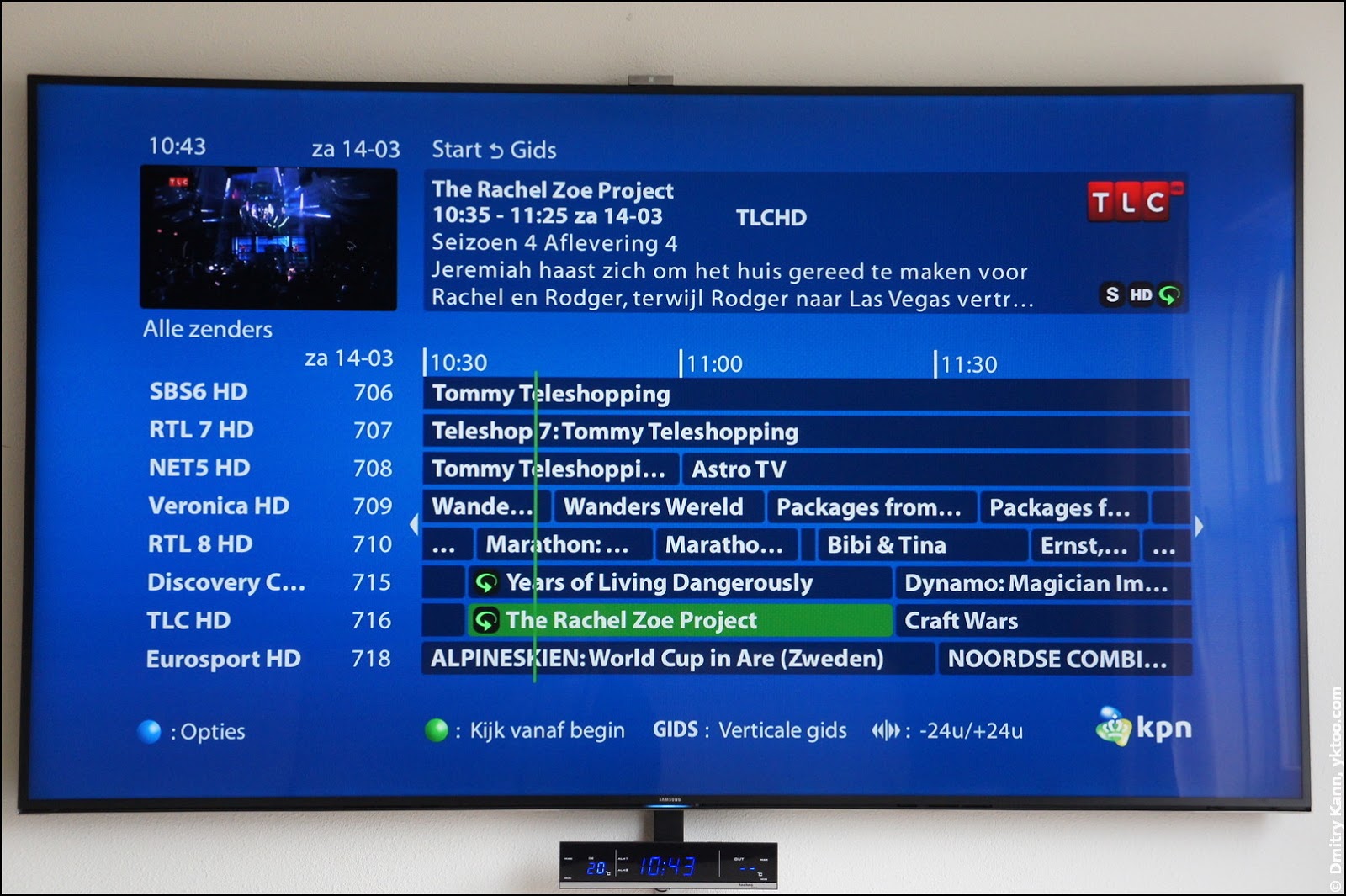
Of course, this screen doesn’t support the mouse mode (the STB knows nothing of it), so you’ll have to use the arrow buttons. But it’s still quite handy and works well.
Next: Part three. Accessories
 — world’s fastest URL shortener
— world’s fastest URL shortener
Comments